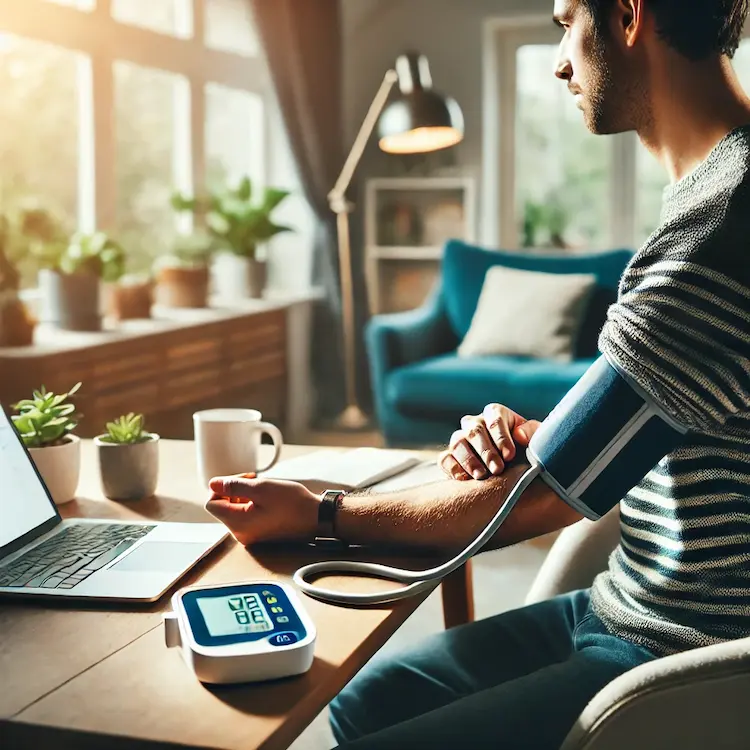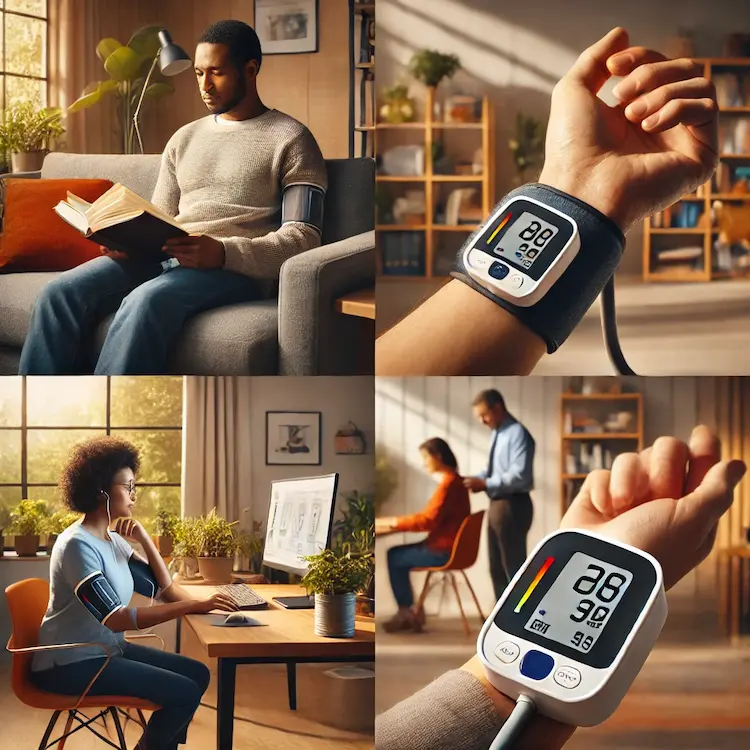Ambulatory Blood Pressure Monitoring (ABPM) is a revolutionary tool that helps healthcare providers accurately diagnose and manage hypertension. Unlike standard clinical measurements, ABPM tracks a patient’s blood pressure continuously over 24 hours, capturing a comprehensive picture of their cardiovascular health. This guide explains what ABPM is, why it’s important, and how it compares to other methods, along with tips for its effective use.
Understanding ABPM
What is ABPM?
ABPM is a method where a portable blood pressure monitor, typically worn on the upper arm, records blood pressure at set intervals throughout the day and night. These intervals are usually every 15-30 minutes during daytime activities and every 30-60 minutes during sleep.
How Does ABPM Work?
- The device is fitted at a healthcare clinic and remains with the patient for a full day.
- It takes readings automatically, requiring minimal input from the patient.
- Data is then analyzed by healthcare professionals to generate detailed reports of blood pressure trends.

Why ABPM is Crucial
ABPM offers significant advantages over traditional in-clinic measurements. Here’s why it is considered a game-changer:
- Accurate Hypertension Diagnosis
Many patients exhibit “white coat hypertension,” where anxiety causes elevated blood pressure readings in clinical settings. Conversely, some patients have “masked hypertension,” with normal clinic readings but high blood pressure in daily life. ABPM detects both, providing a true picture of cardiovascular health.
- Monitoring Variations
Blood pressure naturally fluctuates throughout the day due to physical activity, stress, or sleep. ABPM identifies circadian patterns, including:
- Nocturnal Hypertension: Elevated blood pressure during sleep.
- Non-Dipping Pattern: A lack of the normal nighttime blood pressure dip, often associated with a higher risk of cardiovascular events.
- Optimizing Treatment Plans
ABPM helps clinicians evaluate the effectiveness of medications. It ensures blood pressure remains controlled across a 24-hour cycle, aiding adjustments in dosages or medication types.
The Broader Health and Societal Impact
Improved Health Outcomes
Research has shown that ABPM is more predictive of heart attacks, strokes, and kidney disease than clinic-based readings. Identifying nocturnal hypertension or irregular patterns enables timely intervention, reducing long-term complications.
Cost-Effectiveness
Early diagnosis and precise management reduce hospitalizations and the need for expensive treatments for advanced cardiovascular diseases.
Patient Empowerment
With access to ABPM data, patients gain a clearer understanding of their condition, encouraging lifestyle changes such as diet improvements, increased physical activity, and stress management.
Comparing ABPM with Other Methods
To understand ABPM’s value, it’s essential to compare it with alternative methods of blood pressure monitoring.
| Method |
Frequency |
Advantages |
Limitations |
| In-Clinic Measurement |
Periodic (appointments) |
Quick, accessible, and non-invasive |
White coat effect; doesn’t reflect daily variability |
| Home Blood Pressure Monitoring |
Daily or weekly |
Convenient and inexpensive |
Limited to specific times of the day |
| ABPM |
Continuous (24 hours) |
Comprehensive and predictive |
Expensive and may cause slight discomfort |
Tools and Techniques Used in ABPM
Devices
Modern ABPM devices are lightweight, easy to wear, and equipped with advanced features:
- Adjustable Intervals: Customizable settings for frequency of readings.
- User-Friendly Reports: Data is processed into visual charts for easier interpretation by doctors and patients.
Software Integration
ABPM devices often connect to analysis software, which:
- Generates detailed graphs of systolic, diastolic, and mean arterial pressures.
- Highlights anomalies, such as nocturnal hypertension or non-dipping patterns.
Emerging Technologies
Innovations like Bluetooth-enabled ABPM devices allow real-time data sharing with healthcare providers, enhancing remote patient monitoring.

Practical Tips for Patients Using ABPM
Before Monitoring:
- Avoid consuming caffeine or alcohol 30 minutes prior to starting ABPM.
- Wear comfortable clothing to prevent interference with the device.
During Monitoring:
- Keep your arm relaxed and still during readings.
- Log activities, such as exercise or meals, as they may influence blood pressure levels.
After Monitoring:
- Review the results with your doctor to understand patterns and potential interventions.
Key Statistics and Insights
- Up to 30% of patients diagnosed with hypertension in a clinical setting may have white coat hypertension.
- 50% of patients with high cardiovascular risks have nocturnal hypertension, often undetected without ABPM.
- The World Health Organization estimates that improved hypertension management could prevent 7.5 million deaths annually worldwide.
Summary and Recommendations
ABPM provides unparalleled accuracy in diagnosing and managing hypertension. By capturing blood pressure variations over a 24-hour period, it enables early detection of risks and ensures treatments are effective. Whether you’re a patient or healthcare provider, incorporating ABPM into routine care can significantly improve health outcomes.
Key Takeaways:
- Use ABPM to diagnose hidden hypertension (e.g., white coat or masked hypertension).
- Monitor blood pressure during daily activities and sleep for a complete picture.
- Regularly consult with healthcare providers to analyze ABPM results and adjust treatment plans.

